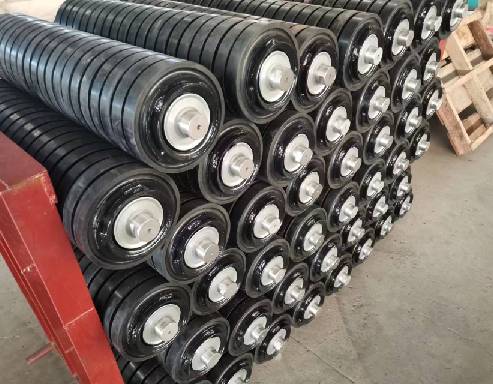 Afrikaans
Afrikaans  Albanian
Albanian  Amharic
Amharic  Arabic
Arabic  Armenian
Armenian  Azerbaijani
Azerbaijani  Basque
Basque  Belarusian
Belarusian  Bengali
Bengali  Bosnian
Bosnian  Bulgarian
Bulgarian  Catalan
Catalan  Cebuano
Cebuano  Corsican
Corsican  Croatian
Croatian  Czech
Czech  Danish
Danish  Dutch
Dutch  English
English  Esperanto
Esperanto  Estonian
Estonian  Finnish
Finnish  French
French  Frisian
Frisian  Galician
Galician  Georgian
Georgian  German
German  Greek
Greek  Gujarati
Gujarati  Haitian Creole
Haitian Creole  hausa
hausa  hawaiian
hawaiian  Hebrew
Hebrew  Hindi
Hindi  Miao
Miao  Hungarian
Hungarian  Icelandic
Icelandic  igbo
igbo  Indonesian
Indonesian  irish
irish  Italian
Italian  Japanese
Japanese  Javanese
Javanese  Kannada
Kannada  kazakh
kazakh  Khmer
Khmer  Rwandese
Rwandese  Korean
Korean  Kurdish
Kurdish  Kyrgyz
Kyrgyz  Lao
Lao  Latin
Latin  Latvian
Latvian  Lithuanian
Lithuanian  Luxembourgish
Luxembourgish  Macedonian
Macedonian  Malgashi
Malgashi  Malay
Malay  Malayalam
Malayalam  Maltese
Maltese  Maori
Maori  Marathi
Marathi  Mongolian
Mongolian  Myanmar
Myanmar  Nepali
Nepali  Norwegian
Norwegian  Norwegian
Norwegian  Occitan
Occitan  Pashto
Pashto  Persian
Persian  Polish
Polish  Portuguese
Portuguese  Punjabi
Punjabi  Romanian
Romanian  Russian
Russian  Samoan
Samoan  Scottish Gaelic
Scottish Gaelic  Serbian
Serbian  Sesotho
Sesotho  Shona
Shona  Sindhi
Sindhi  Sinhala
Sinhala  Slovak
Slovak  Slovenian
Slovenian  Somali
Somali  Spanish
Spanish  Sundanese
Sundanese  Swahili
Swahili  Swedish
Swedish  Tagalog
Tagalog  Tajik
Tajik  Tamil
Tamil  Tatar
Tatar  Telugu
Telugu  Thai
Thai  Turkish
Turkish  Turkmen
Turkmen  Ukrainian
Ukrainian  Urdu
Urdu  Uighur
Uighur  Uzbek
Uzbek  Vietnamese
Vietnamese  Welsh
Welsh  Bantu
Bantu  Yiddish
Yiddish  Yoruba
Yoruba  Zulu
Zulu Drive Pulley Systems for Efficient Conveyor Belt Operations and Performance Optimization
The Importance of Conveyor Belt Drive Pulleys in Industrial Applications
Conveyor belt systems are an integral part of modern industrial processes, performing critical functions in material handling and transportation across various sectors. At the heart of these conveyor systems lie drive pulleys, which play a pivotal role in ensuring the smooth operation and efficiency of the entire setup. Understanding the significance of conveyor belt drive pulleys can provide insights into their functions, designs, and the best practices for maintaining these essential components.
Understanding Drive Pulleys
Drive pulleys are cylindrical components that deliver power to the conveyor belt. They are located at the head of the conveyor system and are connected to a motor, which provides the necessary force to move the belt laden with cargo. When the motor turns the drive pulley, it causes the conveyor belt to move, facilitating the transportation of materials from one point to another.
Drive pulleys can come in various designs, including lagged and bare options. Lagging refers to the application of a rubber or ceramic layer on the pulley surface, which enhances friction and optimizes the grip between the pulley and the conveyor belt. This crucial feature helps prevent slippage, thereby maximizing the efficiency of the conveyor system. Different lagging materials are used depending on the application, including smooth, rough, or chevron designs tailored for specific operational requirements.
Key Functions of Drive Pulleys
Drive pulleys serve multiple critical functions in conveyor belt systems. Firstly, they are responsible for the overall movement of the belt itself. Their ability to rotate and provide momentum directly translates into the transportation of goods, making them indispensable in industries such as manufacturing, mining, and logistics.
Secondly, drive pulleys contribute to the tensioning of the conveyor belt. Proper tension is essential for effective operation and to reduce the risk of belt wear or damage. Drive pulleys help maintain the required tension by allowing for adjustments to be made in the system, ensuring consistently smooth operation.
conveyor belt drive pulley

Moreover, drive pulleys can also act as components for facilitating change in direction
. In cases where the conveyor belt needs to navigate corners or changes in elevation, guide pulleys or return pulleys work alongside drive pulleys to help redirect the belt flow while maintaining efficiency.Maintenance and Best Practices
To ensure optimal performance, regular maintenance of conveyor belt drive pulleys is crucial. This maintenance typically involves visual inspections for signs of wear, proper alignment checks, and monitoring lubrication to avoid excessive friction, which could lead to premature wear or failure.
It is also important to ensure proper installation and adjustment during initial setup. Misalignment of the drive pulleys can result in uneven wear on the conveyor belt and lead to costly downtime. Alignment tools and techniques are indispensable in guaranteeing that the pulleys are correctly positioned and balanced, thus enhancing overall operational efficiency.
Conclusion
In conclusion, conveyor belt drive pulleys are essential components within industrial conveyor systems, responsible for driving the belt that carries materials from one location to another. Their design, functionality, and maintenance directly influence the productivity and efficiency of various operations. By understanding the importance of drive pulleys and adhering to best practices for maintenance, businesses can optimize their conveyor systems, reduce downtime, and ultimately improve operational outcomes.
As industries continue to rely heavily on automation and efficient material handling, the role of conveyor belt drive pulleys will remain vital, highlighting the need for ongoing innovation and improvements in their design and maintenance practices. Investing in advanced technologies and materials for drive pulleys will undoubtedly yield significant long-term benefits for industrial operations worldwide.
-
Revolutionizing Conveyor Reliability with Advanced Rubber Lagging PulleysNewsJul.22,2025
-
Powering Precision and Durability with Expert Manufacturers of Conveyor ComponentsNewsJul.22,2025
-
Optimizing Conveyor Systems with Advanced Conveyor AccessoriesNewsJul.22,2025
-
Maximize Conveyor Efficiency with Quality Conveyor Idler PulleysNewsJul.22,2025
-
Future-Proof Your Conveyor System with High-Performance Polyurethane RollerNewsJul.22,2025
-
Driving Efficiency Forward with Quality Idlers and RollersNewsJul.22,2025





























